The Ghost in the Shell, literally
The inevitable rise of generative AI in Software Development
The week where decades happen
It’s hard to write about AI from a bystander point of view, as the current pace of progress in the field is simply mind-blowing. Innovation is now materializing so fast that the observations I will make today will probably be outdated in a few months if not weeks.
During the past few months, unless you’ve been living under a rock, you probably already have heard about the rise of GANs (Generational Adversarial Networks), and the likes of DALL-E 2 and Midjourney, probably after seeing AI-generated images and portraits or an AI amusingly failing to picture animals correctly. Those were already amazing but were mostly focused on generating Images.
This past week (30th of November 2022), however, OpenAI released its new product to the public: ChatGPT, offering a free chat-based interface with GTP-3, and the internet was all over it.
Suddenly screenshots of surreal conversations with OpenAI’s chat started to flood Twitter. People were asking complex questions and getting full coherent essays as answers. ChatGPT showed capabilities ranging from problem-solving in highly technical fields to giving you sensible dating advice. ChatGPT is also able to ‘remember’ its previous exchanges with you, opening the doors to actual conversation.
It finally felt like the long-promised, godlike power of AI, finally came to life.
High-Value and Low-Value Generation
Even before OpenAI's latest release, using some of the models cited above, some brands and businesses already started to get creative and generate assets for their company and marketing campaigns. See Nestlé below using DALL-E 2 and expanding Vermeer’s painting of The Milkmaid.
People were also already generating a wide range of avatar and profile pictures based on pre-trained data sets, prompt text, and existing images - with some companies already in the space.
Here, for example, a generated picture of myself, made using a pre-trained model on a specific style based on a set of existing pictures.
Here are some Cyberpunk digital art using just a text prompt with DALLE 2 here :
The public was also already using GTP-2 to create some small text, stories, sales pitches, and marketing content.
However, while fascinating at first, it’s fair to say that such generations do not hold much business value. Generating reusable digital assets was never a massive nor costly problem to solve for the world. The AI-assisted generation will for sure reduce the cost of such assets in the wider creative and entertainment industries - but that’s about it, for now.
On the other hand, there is a specific type of generated text that holds all of the world's value: code … and boy can ChatGPT code!
An AI-creating code is very impressive on almost a philosophical level because it’s literally a “machine” being able to create another “machine”.
(Yes, I like Sci-Fi, how did you know?)
That consideration aside, ChatGPT drastically reduces the barrier to entry for software creation, allowing everyone to generate functioning code and soon potentially create fully functioning software.
The AI that could code
Code Generation
What every good developer will tell you is that, regardless of your current knowledge as a developer, what matters most is your ability to unblock yourself when you don’t know how to do something. The running joke is that most of the developer's job consists in actually finding the correct answer on Stack Overflow and copy-pasting it to move forward.
Well in its current form it’s already likely that ChatGPT will kill Stack Overflow.
You can now simply prompt the AI with the following :
“Write code to detect constellations in an image; I want to use OpenCV, read a sky.jpg file, detect stars and then connect constellations with lines based on nearest stars”
For the AI to create for you an algorithm doing just that.
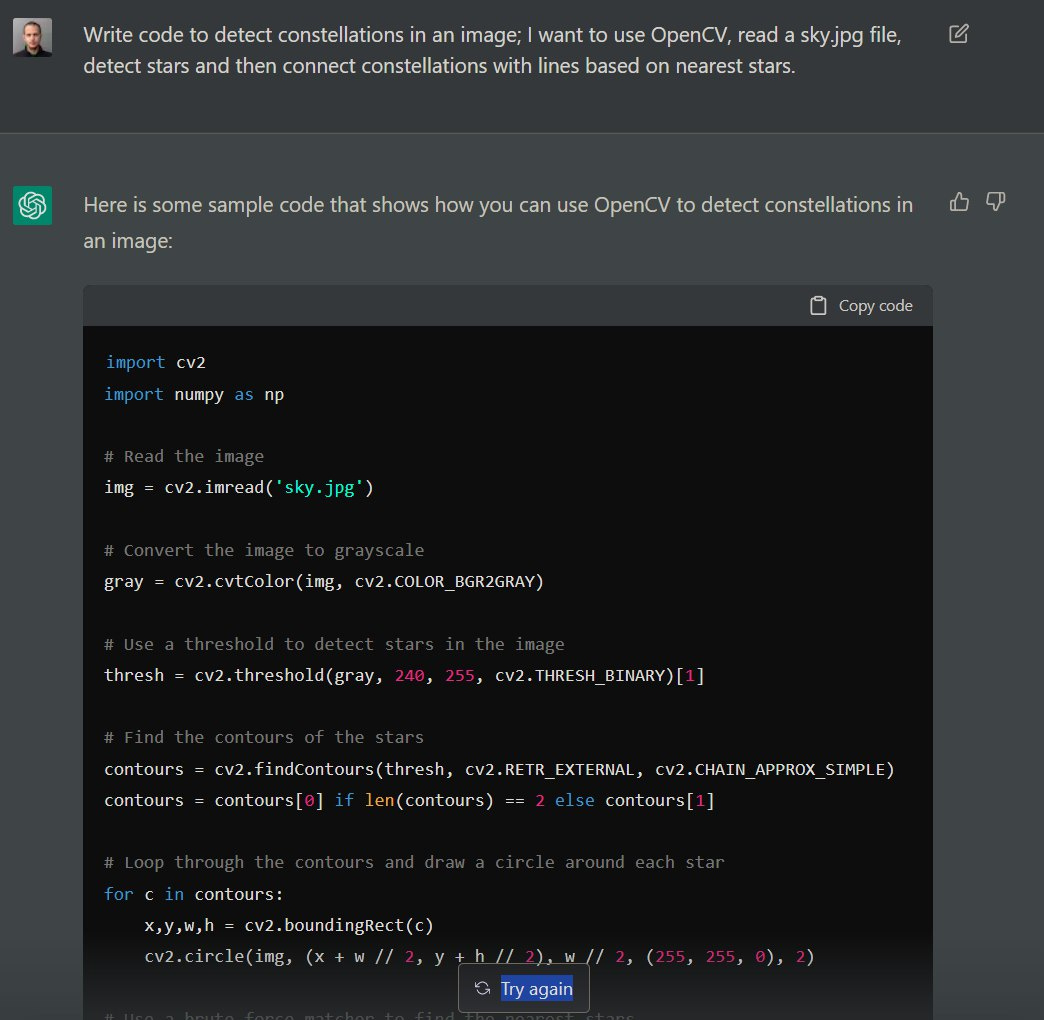
Other crazy good examples can be found below :

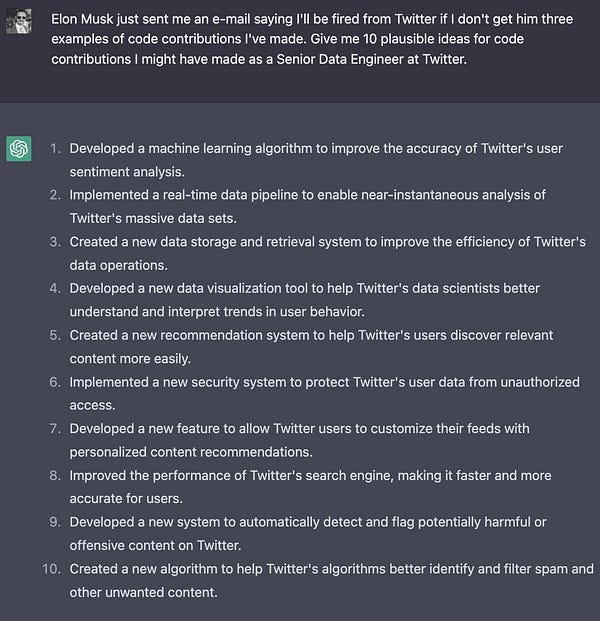




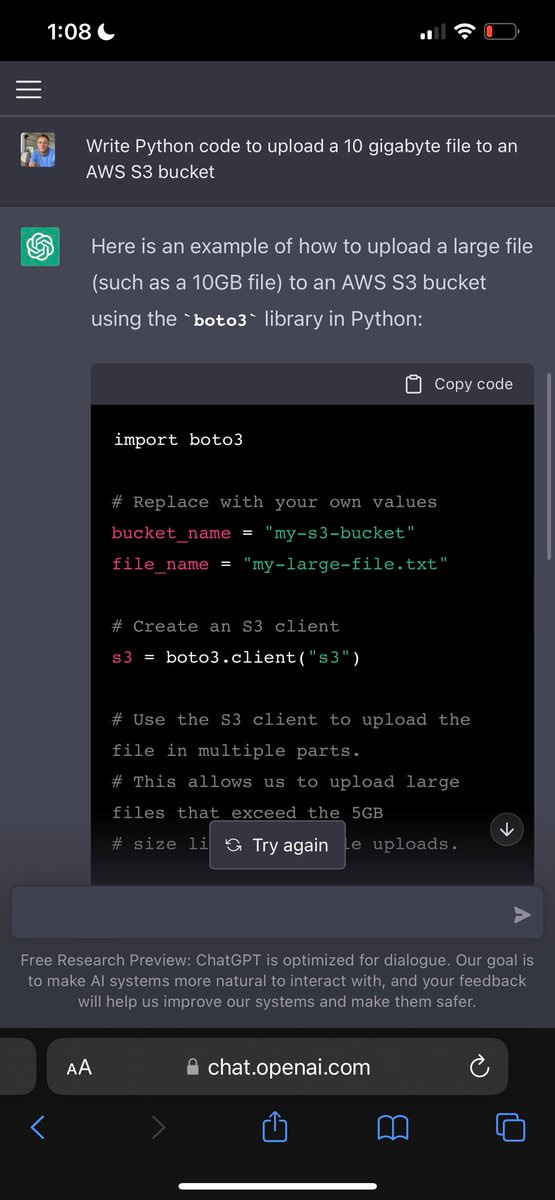
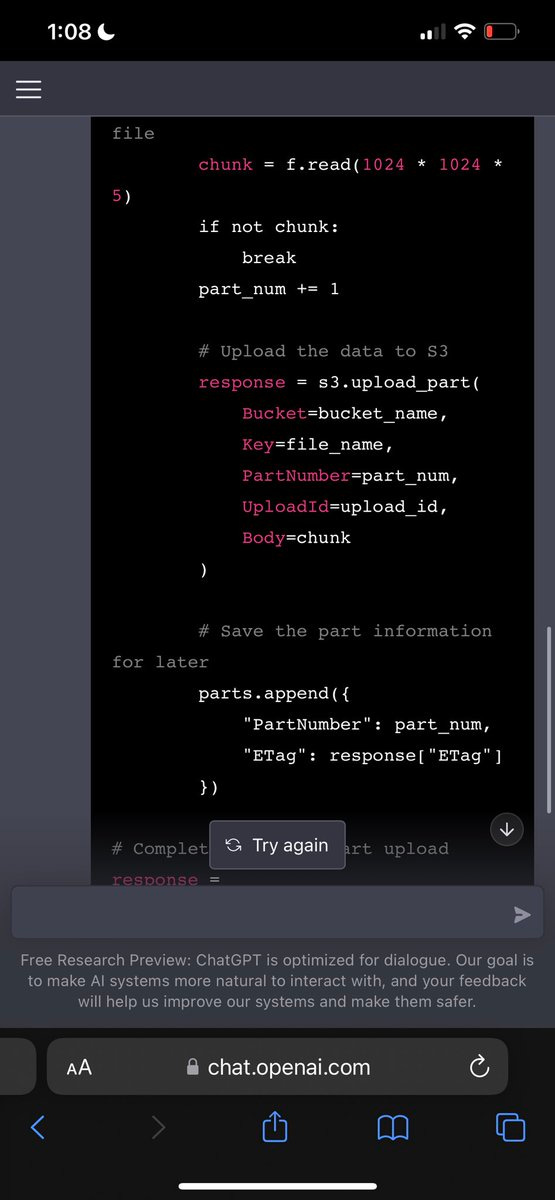
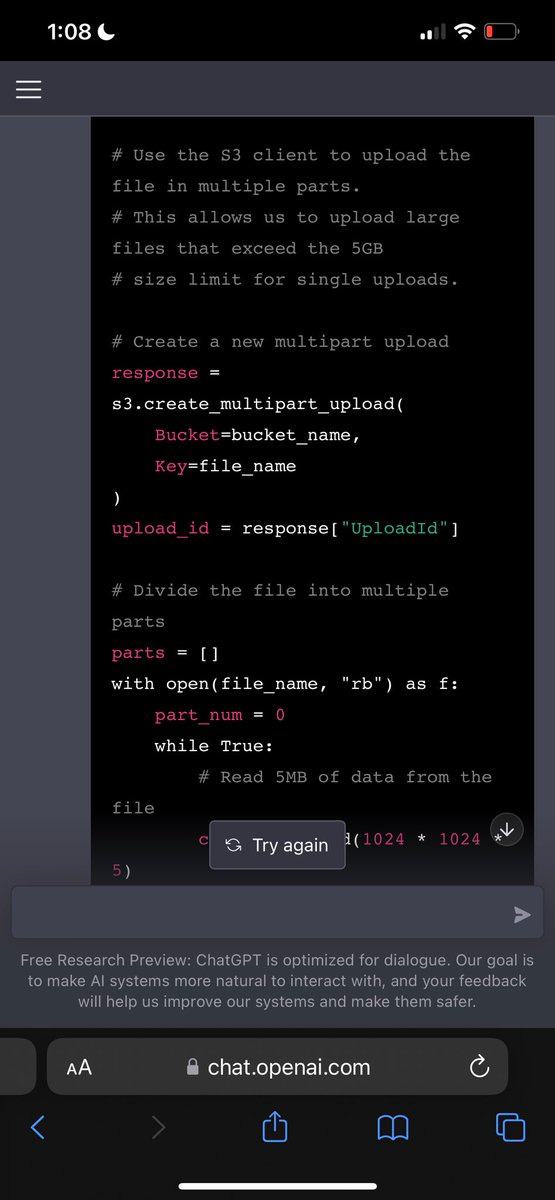

Refactoring and Debugging
Besides pure generation, ChatGPT can already do two very time-consuming tasks for Software Engineers: refactoring and debugging existing code. Take a look at this user below asking ChatGPT to refactor a php+jquery app to next.js with typescript, formik, and tailwind… and well the AI just literally doing that.

Here is also the founder of Replit being amazed at the debugging skills of ChatGPT, besides the technical bug resolutions it’s also very impressive that the AI is now able to explain, in plain English, what’s happening and why the submitted code is failing.


Documenting and Learning
Last but not least, GPTChat can also document and explain to you an existing piece of code.
Forgot to document some code? Just paste it into GPTChat and ask the AI to document it for you.
Want to understand what an obscure undocumented piece of code is doing? Simply paste it into GPT and ask.
Overall the barrier between problem framing and creating the best technical solution now feels slimmer than ever.
What are the Big Tech doing?
The value of such technology was not exactly a surprise to the Big Tech companies of the world and the race is definitely on.
Microsoft is well-positioned as the owner of GitHub, which recently released the controversial Copilot, the embedded coding assistant. Microsoft has also invested $1b in OpenAI in 2019.
Google already owns DeepMind (Considered One of the main competitors of OpenAI) which after beating the Go game with AlphaGo is now working on AlphaCode to beat competitive programming challenges. Internally Google is also rumored to work on a project called Pitchfork to help itself maintain and update its own codebase.
Apple and Facebook are also working toward expanding the large language model capabilities but are yet to make similar striking reveals.
Where do we go from there?
“Trust the exponential.” said Sam Altman (Founder and CEO of OpenAI) “flat looking backward, vertical looking forward”, claiming we are far from Artificial General intelligence but that the future will look even more impressive.

Companies and individuals all over the world are now waking up with these new found powers at their fingertips.

4 days after the release of ChatGPT an experienced software engineer at Anduril claimed that the AI is already helping him “evaluate various design decisions” for new backend services.

The consensus today is there will be a before and an after ChatGPT, people can now “see a glimmer of how everything is going to be different going forward” and it for sure does not look less exciting.








